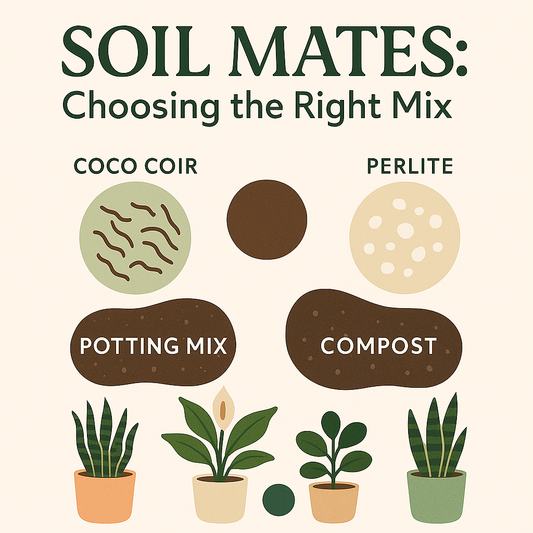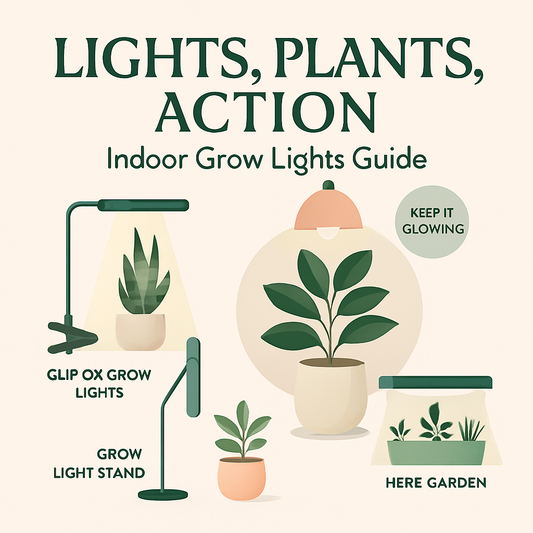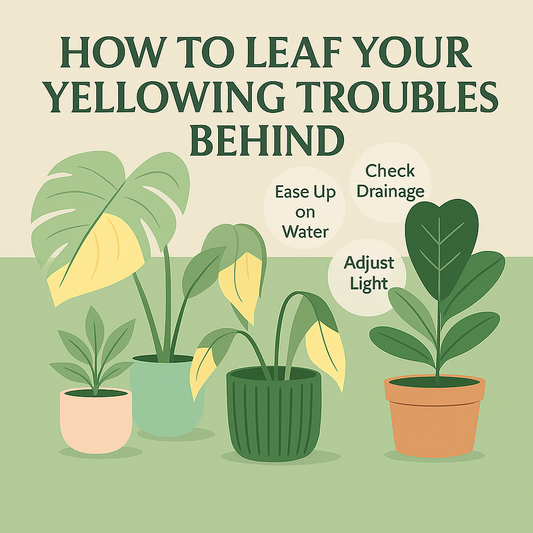Peace, Love, and Plants: Houseplants That Breathe Life In

Did you know your Monstera might be pulling double duty? Yep — some of your favourite leafy roommates are also working behind the scenes to detox your air.
While indoor plants won’t replace a HEPA filter, many do help absorb airborne nasties like formaldehyde, benzene, and VOCs — especially in sealed-up modern homes. Bonus: they look good doing it.
So if you're after a space that feels as fresh as it looks, these air-purifying plants have you covered.
🌿 What Does "Air-Purifying" Actually Mean?
Some plants are able to:
-
🍃 Absorb pollutants through their leaves
-
🌱 Pull toxins down into their root systems
-
🌬️ Increase humidity (hello, clearer sinuses)
-
🌡️ Naturally cool and balance the air
The OG study came from NASA (yes, space NASA), showing certain houseplants could filter toxins in sealed environments. Modern experts say: yes, it's real — but you’ll need more than one.
1. 🌼 Peace Lily (Spathiphyllum)
The ultimate multitasker: gorgeous, easy-going, and one of the top performers in air-purifying studies.
What it removes:
-
Benzene
-
Formaldehyde
-
Trichloroethylene
-
Ammonia
Care tips:
-
🌥️ Low to medium light
-
💧 Keep soil lightly moist
-
✂️ Remove spent blooms to keep it tidy
➡️ Looks luxe, cleans the air — we love a functional diva. [INSERT PRODUCT LINK HERE]
2. 🌿 Snake Plant (Sansevieria)
Also known as “Mother-in-law’s Tongue,” this spiky classic is one of the best at filtering airborne toxins — especially at night.
What it removes:
-
Formaldehyde
-
Nitrogen oxides
-
Benzene
Care tips:
-
🌤️ Tolerates low light
-
💧 Water when soil is completely dry
-
🌛 Known for producing oxygen after dark
➡️ Stylish and strong. A must-have for bedrooms. [INSERT PRODUCT LINK HERE]
3. 🌴 Areca Palm (Dypsis lutescens)
Also called the Butterfly Palm, this graceful beauty works hard at humidifying and removing toxins from the air.
What it removes:
-
Toluene
-
Xylene
-
Adds moisture to dry air
Care tips:
-
🌤️ Bright, indirect light
-
💧 Keep soil moist but not soggy
-
🌡️ Prefers warmer rooms
➡️ Instant tropical calm, with a side of breathability. [INSERT PRODUCT LINK HERE]
4. 🧼 Rubber Plant (Ficus elastica)
With its glossy, deep green leaves, this plant is not only a stunner — it's a dust and toxin magnet.
What it removes:
-
Formaldehyde
-
General air particulates
Care tips:
-
☁️ Medium to bright light
-
💧 Water weekly in warmer months, less in winter
-
🧽 Wipe leaves regularly to keep them absorbing well
➡️ A clean aesthetic and clean air? Yes, please. [INSERT PRODUCT LINK HERE]
5. 🍃 Pothos (Epipremnum aureum)
Popular for good reason: Pothos is forgiving, fast-growing, and surprisingly helpful in purifying indoor air.
What it removes:
-
Benzene
-
Formaldehyde
-
Carbon monoxide
Care tips:
-
🌥️ Low to bright, indirect light
-
💧 Water when top 2–3cm of soil is dry
-
✂️ Pinch back for bushier growth
➡️ Easy care, cleaner air, and a trailing vibe? We’re in. [INSERT PRODUCT LINK HERE]
🧪 Honourable Mentions
These also pull their weight when it comes to freshening up your space:
-
🌸 Gerbera Daisy — if you love blooms with benefits
-
🌿 Boston Fern — great for boosting humidity
-
🍀 Chinese Evergreen — toxin-absorbing and lush
-
🧵 Spider Plant — survives neglect, clears the air
✨ Where to Place Air-Purifying Plants
🛏️ Bedrooms: Snake plants + peace lilies
💼 Home offices: Rubber plant or pothos
🛁 Bathrooms: Spider plant or Boston fern
🚪 Entryways: Areca palms make a dramatic, clean-air welcome
🌬️ How Many Plants Do You Need?
Studies suggest 1 plant per 3–4m² for noticeable air-quality benefits. So in an average lounge, you’re looking at 3–5 leafy friends doing the work.
No, it won’t replace ventilation — but it will help. And look amazing doing it.
🌱 Final Leaf
These green stunners aren’t just pretty faces — they’re nature’s own air-purifying powerhouses. If you’re craving a home that looks good and feels fresh, bringing in a few of these leafy MVPs is a breath of fresh air.
Literally.




















